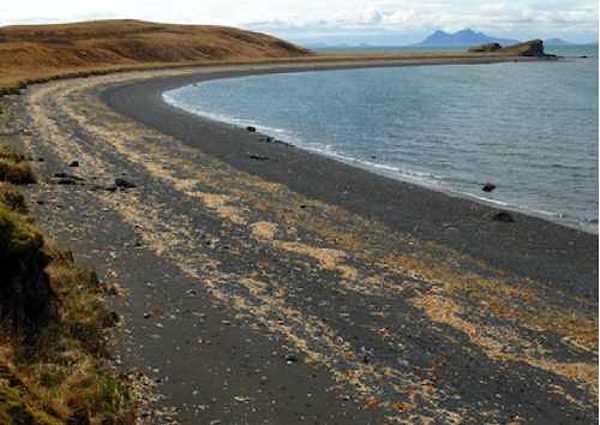Asut qaugyanek canamataallriit. – They used to make pots out of sand.
Sand is a fine, granular material that forms as rocks break down into small particles. This slow process, caused by erosion and weathering, can take thousands of years. The color of sand deposits reflects the stone from which they originate. Kodiak’s sands are typically dark grey, composed of the slates and greywackes that make up much of the archipelago’s bedrock. However, there are lighter colored sands in areas where other types of bedrock or even crushed shell are present. Ivor Cove, on the eastern shore of Deadman’s Bay has white sand beaches from weathered granite.
Sandy beaches make up less than 10% of Kodiak’s coastline, and they are typically found in protected environments—inlets, inner bays, and lagoons. Alutiiq harvesters know that the type of beach influences the types of shellfish available. Rocky beaches contain marine algae and dense concentrations of barnacles, mussels, chitons, limpets, snails, and sea urchins. In contrast, sand, silt, and small gravel beaches are home to a variety of bivalves. Clams, cockles, and tellins thrive in these environments.
Sand was a useful material for Alutiiq builders, who used it to stabilize house posts. They dug holes in the ground, placed wooden posts inside, and then filled the area around the posts with sand. This technique was particularly common before about 5,500 years ago and it represents a great deal of work. People had to carry the heavy sand to their villages. Why did they do it? Perhaps the sand allowed people to pull and reuse posts. It may also have slowed decay by draining water and keeping wet soil away from wooden posts. Alutiiq ancestors also used sand to refresh the floors of their sod houses. After living in a house for a while, people created a clean floor with a thin covering of sand or fine gravel.







